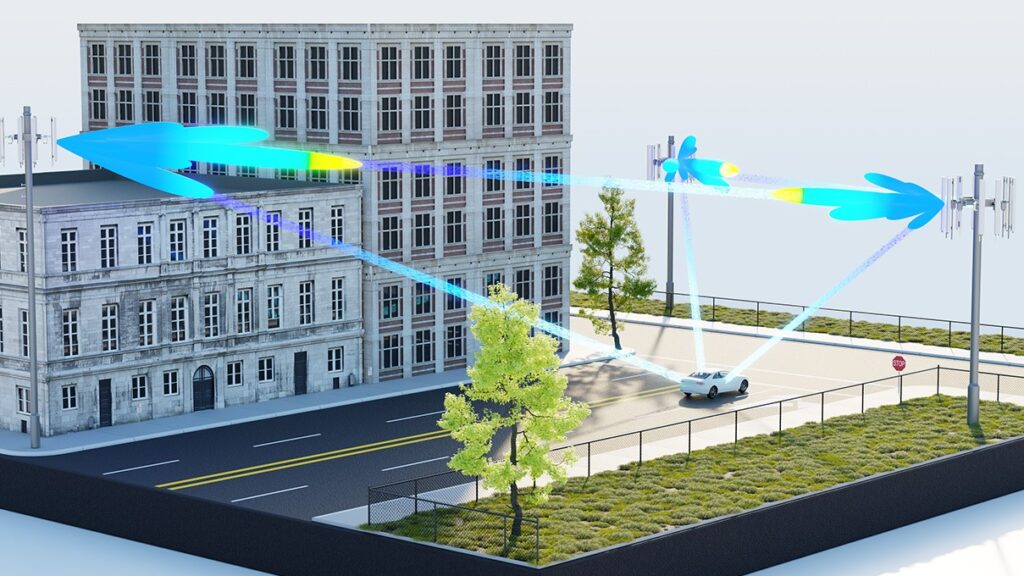Benefits of GPU in 5G Networks
Global telecoms corporations are looking into ways to efficiently deliver many of these new AI applications to the edge over 5G and impending 6G networks as generative AI takes over boardrooms all around the world.
By 2025, telcos expect to have installed more than 17 million 5G microcells and towers worldwide. The next major issue for the industry is to build, manage, and optimize this new infrastructure while preserving service delivery quality and enhancing user experience.
In its network in Japan, NTT DOCOMO declared that it is implementing a GPU-accelerated wireless solution. As a result, it is the first operator to ever construct a commercial 5G network that is GPU-accelerated.

With its action, DOCOMO hopes to solve the multibillion-dollar issue of achieving Open RAN’s promised flexibility, scalability, and supply chain diversity while enhancing performance, TCO, and energy efficiency.
The NVIDIA Aerial vRAN stack and NVIDIA Converged Accelerators are the foundation of the high-performance Fujitsu 5G virtual radio access network (vRAN) used in the 5G Open RAN solution. With this combination, telcos may build a fully software- and cloud-defined network with the ability to dynamically assign resources while utilizing equipment that is industry-standard.
Sadayuki Abeta, worldwide head of Open RAN solutions at NTT DOCOMO, said: “Open RAN offers the opportunity to build next-generation 5G networks with unprecedented flexibility and scalability thanks to multivendor connections.” We anticipate collaborating with NVIDIA to develop infrastructure solutions that address those demands.
The 5G Open RAN solution uses a hardened, carrier-grade vRAN stack and is the first 5G vRAN for telco commercial deployment leveraging the NVIDIA Aerial platform. The NVIDIA Aerial vRAN stack for 5G, AI frameworks, enhanced computational infrastructure, and long-term software support and maintenance are all included in the platform.
GPU Acceleration’s Cost and Energy-Efficiency Benefits
The new 5G solution employs the NVIDIA Aerial platform in conjunction with products from Fujitsu and Wind River to cut expenses and power usage. According to DOCOMO, the solution lowers overall expenses by up to 30%, network design usage by up to 50%, and power consumption at base stations by up to 50% when compared to its current 5G network installations.
Masaki Taniguchi, senior vice president and head of the Mobile System Business Unit at Fujitsu Limited, said: “Delivering a 5G Open RAN network that satisfies exacting performance requirements of operators is a significant accomplishment.” “Our Fujitsu vCU/vDU will help network operators build high-performance 5G networks for consumers and businesses alike, using the NVIDIA Aerial platform in combination.”
The DOCOMO rollout’s use of NVIDIA technology is a part of a growing array of 5G technologies that are transforming the telecommunications sector. NVIDIA offers a high-performance, software-defined, cloud-native, AI-enabled 5G for on-premises and telco operators’ RAN that is based on the Aerial vRAN stack, NVIDIA Converged Accelerators, NVIDIA BlueField data processing units (DPUs), and a suite of AI frameworks.
The Open RAN 5G vRAN has been developed by Fujitsu, NVIDIA, and Wind River under the OREX (5G Open RAN service name), which was introduced by DOCOMO in February 2021. Fujitsu’s virtualized DU (vDU) and virtualized CU (vCU) platforms, the Wind River cloud platform, Fujitsu’s 5G vRAN software, the NVIDIA Aerial vRAN stack, and NVIDIA Converged Accelerators are all used in the deployment of OREX in Japan.
Paul Miller, chief technology officer of Wind River, said, “Wind River is pleased to partner with NTT DOCOMO, Fujitsu, and NVIDIA towards a vision of enhanced efficiency of RAN installations and operations. “Wind River Studio offers operators a cloud-native, distributed cloud, automation, and analytics solution based on open source, allowing for speedier innovation and the global deployment and management of their 5G edge networks at large scale. High scale production installations have validated this solution.
Building From Japan and Beyond with OREX
A multivendor, Open RAN-compliant 5G vRAN is being promoted to the international operator community by DOCOMO and its partners in OREX. The commercial deployment in Japan is a first step toward OREX’s goal of enabling its members to commercially verify their solutions before marketing them to other operators around the world.
In order to assist operators throughout the world in deploying high-performance, energy-efficient, software-defined, commercial 5G vRANs, NVIDIA is collaborating with DOCOMO and other partners.



[…] components in order to completely unlock and experience the maximum potential of this device. The GPU is used by games to compute a variety of things, including bullet trajectory, item degradation, […]
[…] performance and efficiency for artificial intelligence and high-performance computing with the NVIDIA B100 “Blackwell” GPU built on TSMC’s 3nm […]
[…] In comparison to the iPhone 14 series from the previous year, the iPhone 15 Pro is equipped with Qualcomm’s X70 modem, which enables better 5G speeds. […]
[…] energy savings: Release specifies more 5G network energy-saving methods. To save network energy, this includes studying on-demand SIB1 transmissions […]